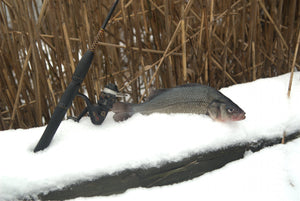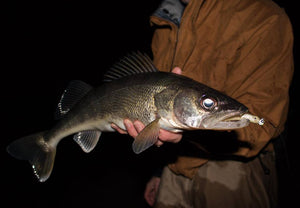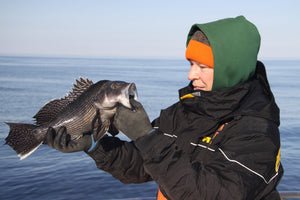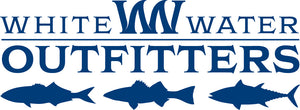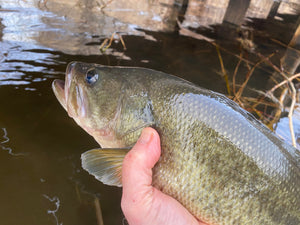Snapper Blues & Blue Claw Crabs: A Natural Double
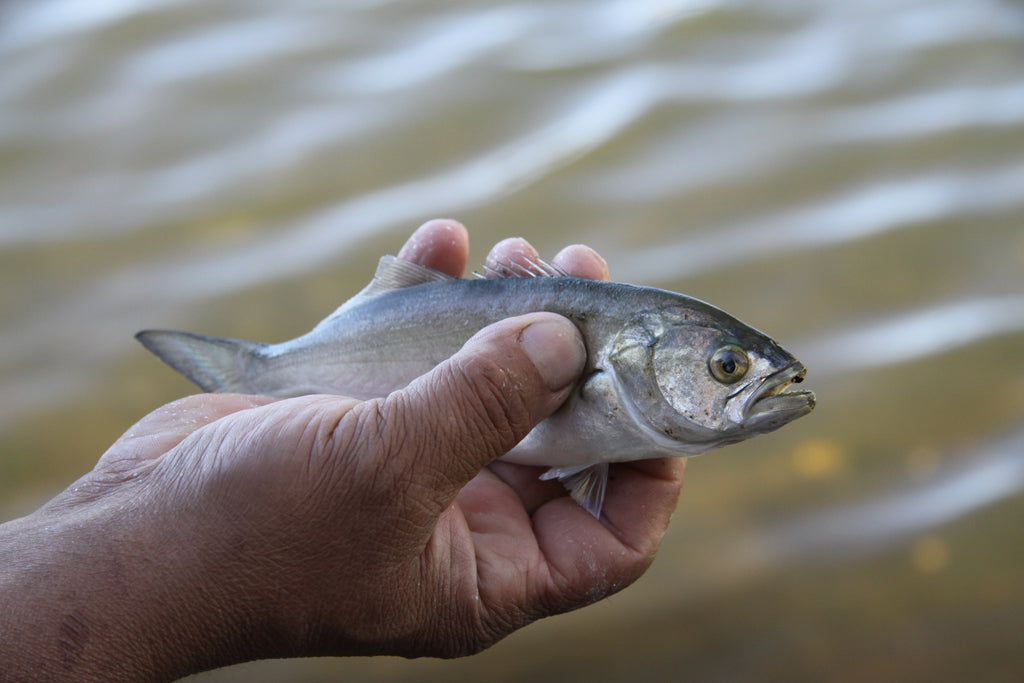
Amongst the dockside crowd, two of the most popular sea critters to be taken in New York waters are snapper bluefish and the blue claw crab. To many anglers, it is the appearance of these two tasty favorites, usually in late July, that truly signals the arrival of summer. By mid-August, with the action in full swing, anglers young and old flock to bayside docks, tidal creeks, bulkheads and beaches in hopes of catching this tasty duet.
Since snappers and blue claws like to inhabit the same types of water, they make a natural double for the thinking angler. By bringing along the gear to catch both, and choosing an appropriate location, it's possible to take enough of each to have a simple seafood feast when you return home. Although it's not always the case, most anglers seem to concentrate on the juvenile bluefish, considering the crabs a bycatch. That makes sense since snapper fishing is more active and requires a bit more concentration than does crabbing.
Before moving on with a little how-to info, let’s be sure to get the regulations right. As with any marine fishing in NY waters, you’ll need to sign-up for the free Recreational Marine Fishing Registry if age 16 or older to target the little blues. While you can keep bluefish (including snappers) of any size throughout the year, you can only keep three per angler unless fishing from a charter or party boat, in which case you can keep five.) Given that most snappers caught in August and September measure between six and 10 inches long, you’ll likely need to bring the whole family down if fishing for dinner.

Snapper fishing can be great family fun and the memories are priceless so get out and give it a try this summer. Shinnecock Canal, just a block from White Water Outfitters, is a perennial hot spot. Photo courtesy of OutdoorTom.com.
Interestingly, you do not need to sign-up for the marine recreational fishing registry if targeting blue claws only. State law limits recreational harvest to possession of no more than 50 crabs of any single species or combination of species per day. Of those crabs, no more than five can be horseshoe crabs. Blue crab season is open year-round but there are size limits. The minimum size for hard shell crabs is 4.5 inches, while soft shells must measure at least 3.5 inches, and peeler/shedder crabs need to be 3 inches or greater. All measurements are from point-to-point across the width of the shell. Note that fishing and crabbing regulations can be updated at any time, so be sure to check the latest Recreational Saltwater Fishing Regulations on the DEC website before heading out.
FISH LIGHT, ENJOY THE FIGHT
For the snappers, a lightweight spinning pole with four- to six-pound test line serves well for tossing out your lures or bait. Since these fish are small by any standard the more wispy the rod, the more sport you'll enjoy.
Rigging is also uncomplicated, the standard being a simple, silver-colored "snapper hook" tied directly to the end of the line with a clinch knot and suspended one- to four-feet below a small float. The standard snapper hook comes with a long shank, making it easy to remove from the toothy jaws of this tiny predator. If you prefer a smaller shanked hook, a size #4 sproat works well and is less obvious but easier for the fish to swallow deep, which is a concern if playing catch and release or worrying about cut-offs from larger snappers in the 8- to 10-inch class that grow more numerous toward the end of the season.
In terms of snapper baits, spearing reign supreme. These can be used whole but usually produce better if cut into small chunks measuring two- or three-inches long. Most days, snappers make no fuss over taking bait. Because they are small, however, you'll need to give them a second or two to get your offering deep enough in their mouth for the hook to take hold. That's why the best snapper anglers allow the fish to pull the float completely underwater before setting the hook.
Nearly as popular are Dolphin Snapper Zapper lures. This lure features a cone-shaped float trailed by a small tube lure. The combination creates a lot of commotion when retrieved with a popping action and is absolutely deadly if the tube lure hook is tipped with a piece of spearing. Other popular snapper options, all of which work best when tipped with bait, include small Deadly Dick Long Casting/Jigging lures, Acme Phoebe Spoons, Hopkins No-Equals and Kastmasters.

Light tackle is the key to maximizing fun with these juvenile bluefish. There is no minimum size limit for snappers but that you can only keep three per person unless fishing on party or charter boats (five allowed). Photo courtesy of OutdoorTom.com.
You’ll find the snappers feeding best on the last of the flood and first of the ebb in most places. If fishing at Shinnecock Canal, a renown hot spot for the diminutive blues, you want to take your shot as the locks are beginning to close, during slack tide, and as the lock begin to open as the current pushes too hard here on the mid-tide stages. This is a great place to fish with the family, especially since White Water Outfitters happens to be located just a block to the east should you need bait, gear or expert advice.
GEARING UP FOR BLUE CLAWS
Once you've got the snappers under control, catching a few blue claw crabs shouldn't be much trouble. Start your quest for these crustaceans by bringing a longhandled net. Though blue claws are known for swimming near the surface after dark, they also come to the top on occasion during the daytime. Having a net handy will allow you to scoop a crab should it happen to swim past.
A few blue claws can usually be found hanging onto most bulkheads during the daytime, especially on calm, hot, muggy days. Simply peak over the edge and look carefully, specifically in areas where a ladder enters the water, a bulkhead comes to a corner, or a sunken boat lies next to the dock. Here the crabs will perch in the shade, picking away at small organisms which lie hidden in the moss or weeds that grow on the submerged wood and concrete. For peering deep into the water to spot crabs holding onto structure, it helps to have a good pair of polarized sunglasses. Before you start looking over the edge, however, consider picking up an inexpensive sunglass retainer so they won’t slip off your head and into the drink.
Of course, you can always bring along a crab trap, too. This is probably the most effective way of taking crabs while snapper fishing. Simply toss over a trap or two and give a check every ten or fifteen minutes. Some days it's possible to take a dozen or more crabs in this manner while collecting enough snappers for a family dinner. Both box and pyramid style traps work well with a slight nod to the latter as its doors seem to close a little more consistently while the trap is being retrieved. Whichever you choose, a whole, scored bunker is probably the best bait. Chicken wings or several killies strung on a wire ring work well, too.
One last thought on this mid-summer dynamic duo: If you would like to make the crabs the center of your trip, consider that snappers bite nearly as well at night as they do during the day. But if the crabbing is good, as it often is at the start of a late-night outgoing tide, it can take a lot of will power to put down the crab net and pick up a fishing rod.
- Bryce Poyer

